Maryland, full of rich history from the Revolutionary War days into the time of the Civil War and beyond. Maryland was the 7th state to be admitted to the Union on April 28, 1788, and was named after the Queen of England Henrietta Maria who was known as Queen Mary in England.
With Maryland’s interesting history from the time of George Washington, there are numerous lost treasures that have not been found. From buried pirate booty to Revolutionary and Civil War buried treasure we will explore these and more in 11 lost treasures of Maryland. So get ready as we discover what is buried under the ground in the great state of Maryland!
11 Lost Treasures of Maryland
| TREASURE | AMOUNT | LOCATION |
|---|---|---|
| Buried Civil War Gold (Monocacy River) | $100,000 worth of gold coins | On the banks of the Monocacy River. |
| Hagan’s Tavern Treasure | $38,000 in gold and jewels | On a mountain area between Braddock and Braddock Heights, Maryland near Hagan’s Tavern |
| Captain Kidd’s Buried Caches | The middle of the Maryland Zoo | Treasure chests of $65,000 worth of gold and jewels |
| Lost Indian Silver Mine | Silvermine | Rattlesnake Hill is located east of Union Mills, Maryland. |
| Lost Gold On The Indies Ballad | $130,000 in gold | Bottom of the Atlantic Ocean off of Maryland near the Chesapeake Bay. |
| Jean de Royer Champagne’s Buried Treasure Chest | $50,000 and $100,000 | Windsor estate off of Old Frederick Road, DeVere Lane in Catonsville, Maryland |
| Patty Cannon’s Hidden Caches | $100,000 in gold coins | Harold Smith Farm is located in Reliance, Maryland just a few miles southeast of Federalsburg. |
| Senator William Perry II’s Buried Family Treasure | Family Fortune | The Perry family’s estate is a few miles west of Easton, Maryland on Highway 33 off of St. Michaels Road. |
| Silver Coins Wash Ashore on Bloodsworth Island | Silver Dutch and French coins dating from 1765 to1783 | Bloodsworth Island in the Chesapeake Bay |
| Holland Island Treasure | Dutch coins from the late 1700s | Holland Island in the Chesapeake Bay |
| Dr. Docker’s Missing Gold | Thousands of dollars worth of gold | Dr. Dockers farm near Commerce, Maryland |
Buried Civil War Gold (Monocacy River)
On July 9, 1864, a Civil War battle took place about six miles from Frederick, Maryland near the Monocacy River. The battle that took place was called the Battle of Monocacy or Monocacy Junction.
The Confederates won this battle. Rumor has it that $100,000 worth of gold coins was buried on the banks of the Monocacy River. The story doesn’t say if the Union or Confederates buried the coins but if I had to speculate I would say the Union side probably buried the coins here knowing that they were losing the battle and didn’t want the Rebels to get their hand on it.
If the gold coins are still there it would be worth much more than $100,000 with the age of the coins and the rise in gold prices in this century. They could be worth millions! By now the coins might have been displaced into the Monocacy River so a good waterproof metal detector would be in order like the Garrett AT Gold.

The Monocacy River has been the site of Revolutionary War battles as well. Many artifacts from that era like cannonballs, musket shells, and even muskets have been found in the river. Would be a fun place to go metal detecting that’s for sure!
Hagan’s Tavern Treasure
Hagan’s Tavern was built around 1790 although wasn’t purchase until 1830 by a man named John Hagan. It was at that time that the tavern became known as Hagan’s Tavern which John Hagan owned through the mid and late 1800s.
The tavern was known and is still known for its excellent food. Hagan’s Tavern now conducts business under the name of The Silver Maple Restuarant and Wine Bar is located on the north side of Olde National Pike road 2 miles from Frederick, Maryland that was a popular thorofare for travelers going from Baltimore to Cumberland, Maryland, and then onto the wild frontier which lay beyond at the time.
A few famous people from the Revolutionary War period have been said to have stopped by Hagan’s Tavern including George Washington, Andrew Johnson, John C. Calhoun, and Henry Clay.
The Story
Hagan’s Tavern holds a lost treasure story. The story states that someone who was a guest at the tavern in 1830 buried a chest that was filled with jewelry and $38,000 in gold and jewels in a mountainous area between Braddock and Braddock Heights, Maryland off of State Route 40a.
The story goes on to say that the man came back to the tavern in 1832 looking for the treasure that he buried in the mountains nearby. One stormy day while the man was looking his buried gold and jewels slipped and fell. He came back to the tavern in bad shape. He was dying and he told his story about the buried treasure to a stranger at the Tavern.
The stranger then told this story to a doctor and to John Hagan the Taverns owner. The man ended up dying never able to recover his buried treasure. It’s presumed that the treasure chest is still awaiting discover somewhere in the mountain area between Braddock and Braddock Heights, Maryland near Hagan’s Tavern.
Captain Kidd’s Buried Caches
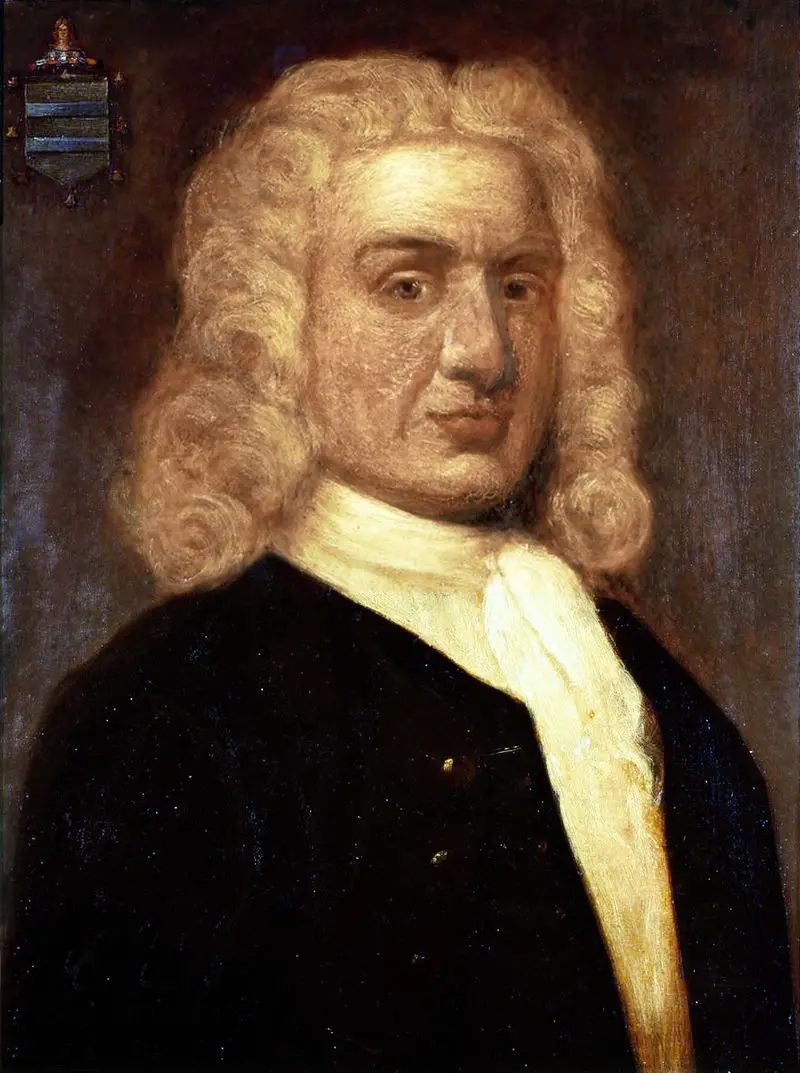
Captain Kidd was a notorious pirate in the 17th century. He did many of his privateering adventures along the East Coast of the United States. Kidd has numerous buried treasure stories associated with his name all over the east coast states including a couple in Maryland.
Although there is no documentation associated with Captain Kidd ever landing in Maryland just the same there are stories of his buried treasure here. One of the tales states that Captain Kidd buried treasure chests of $65,000 worth of gold and jewels near an old mansion that was located in the middle of Druid Hill Park in Baltimore, Maryland. If this treasure tale is true the treasure is now buried in the middle of the Maryland Zoo. Good luck getting permission to dig for it in a zoo.
Another story states that Kidd buried a cache of treasure on Deal Island in Somerset County Maryland. Yet another story of Kidd’s buried treasure tells the tale that William Kidd owned some land along the Susquehanna River in Maryland and buried his treasure on land owned by Richard Touchstone near Port Deposit, Maryland.
The direct descendants of Richard Touchstone say that Kidd could have hidden some of his treasure in Talbot’s Cave and that he might have buried a small cache of treasure on Garrett Island by an ancient volcano.
Lost Indian Silver Mine
According to stories passed down through the generations, there is a lost silver mine in the Silver Run area in Carroll County Maine. Indians first used the mine in the 1750s. A silversmith from Germany named Herr Ahrwud came to this area in the late 1750s and became friends with the Indians who worked in the silver mine.
The Indians would bring Ahrwud silver from the mine and have him make artifacts like eating utensils and silver idols that the tribe would use. Ahrwud was allowed to access the silver from the mine that was said to have a secret entrance on Rattlesnake Hill at Silver Run.
Ahrwud was sworn to secrecy by the Indians but his daughter Frieda insisted that he show her where the mine was located. He gave in and brought her blindfolded to the cave. She couldn’t believe all the silver veins in the mine. She actually was able to mark the path they took to the cave so she could come back at a later time.
Frieda Goes To The Silvermine With a Friend
A few days later Frieda came back to the silver mine with a friend and they mined some silver for themselves. Although they thought they weren’t seen doing this some members of the Indian tribe spotted them and they went back and told their chief about what they had witnessed.
This enraged the Chief and he decided to kidnap Ahrwud and his daughter Frieda. The Indians brought them to the cave where the mine was located and killed both of them there. They then caused a collapse of the entrance sealing the bodies of Ahrwud and Frieda inside.
Is the cave where the mine lays really there? Unfortunately, there are no records of Ahrwud or his daughter living in the area at the time although there are accounts of German Immigrants settling in Carrol County but no account of a silversmith. Many have looked for this lost silver mine over the years on Rattlesnake Hill which is located east of Union Mills, Maryland.
Lost Gold On The Indies Ballad
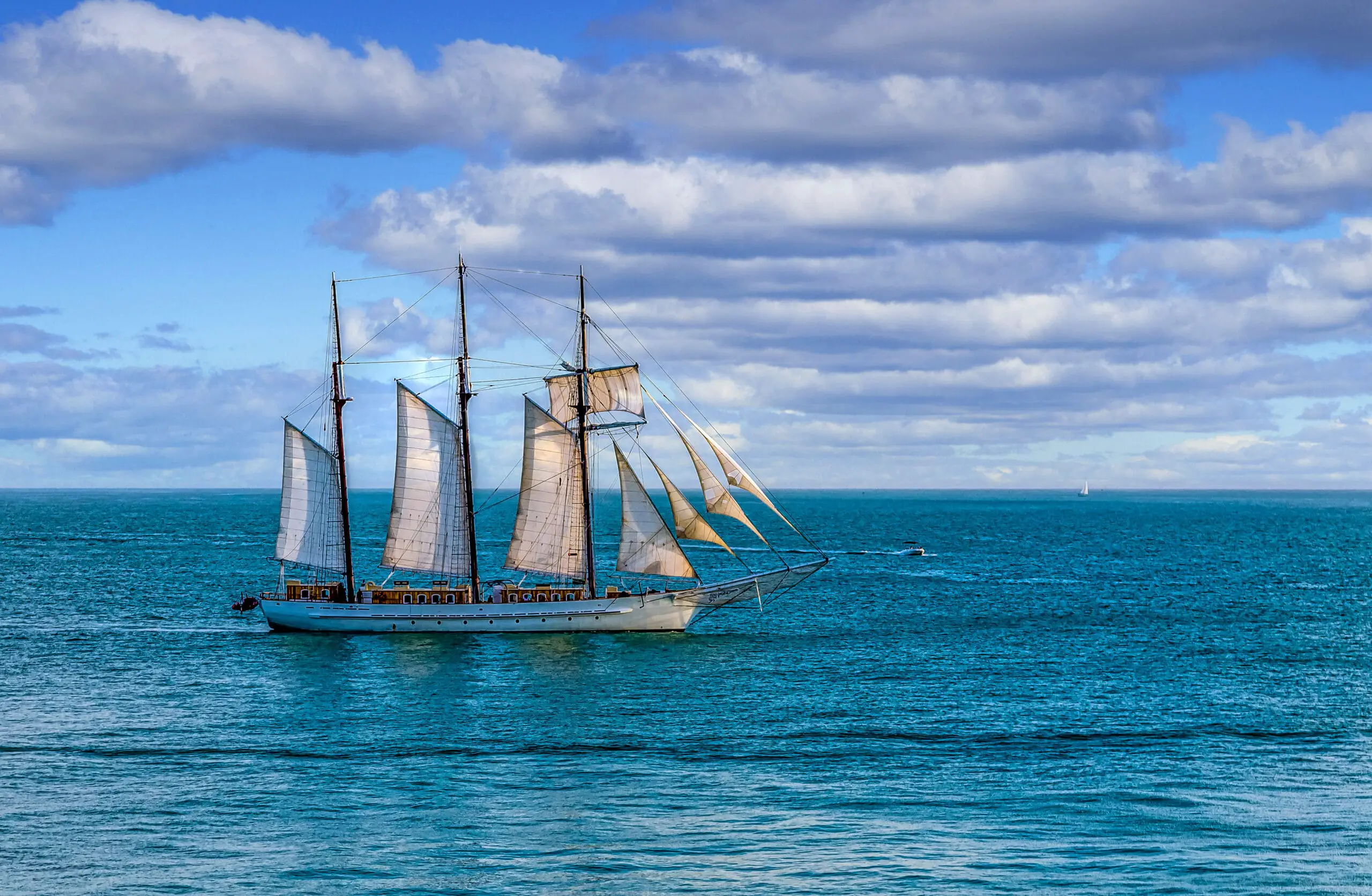
The Indies Ballad was a sloop sailboat that sank off the coast of Maryland in 1792. The ship was on its way to the West Indies but ran into a strong storm on the east coast of the United States. The captain wanting to make good time ignored the crew’s concerns and kept her moving out to sea.
The captain finally decided to try and make it to Chesapeake Bay so they could weather the storm there but they didn’t make it. Near the north end of Assateague Island, the Indies Ballad went down in the storm and sunk to the bottom of the Atlantic.
The Indies Ballad was carrying three large treasure chests filled $130,000 in gold which was going to be used for the slave trade that was becoming popular in America. The gold was in the form of bars that measured one inch by four inches by one-half inch. In today’s money, they would probably be worth millions.
Twelve of the crew and the captain made it to shore but were unable to save the chests of gold. The Indies Ballad and her cargo of gold bars still lie at the bottom of the ocean off the coast of Maryland. Underwater metal detecting and a dive team would be in order to locate this lost treasure.

Jean de Royer Champagne’s Buried Treasure Chest
Jean de Royer Champagne was a French merchant who owned many French merchant ships. He came to Maryland in 1802 and bought a 10,000-acre property called Windsor from a man named DeVere. Champagne worried that ships would be taken during the French Revolution he quickly sold them all for a profit between $50,000 and $100,000.
Without telling his family Champagne and his personal servant buried the money which was put in a treasure chest somewhere on the Windsor estate property. A few years later Champagne became senile and soon died. The servant that helped Champagne bury the treasure chest went to a community called Mt. Ceblo to live out the rest of his life.
It is there that he told his friends about the buried chest but he said he couldn’t remember where they buried the chest because they were in the woods at dark when they buried it. If the story is true the buried chest is still somewhere on the Windsor estate off of Old Frederick Road, DeVere Lane in Catonsville, Maryland.
Patty Cannon’s Hidden Caches
Patty Cannon a murderous illegal slave trader from the early 1800s has a few buried treasure stories from multiple states including Delaware and Maryland. You can read more about Patty Cannon’s treasure in Delaware in the article 4 Lost Treasures of Delaware that I previously wrote.
Anyhow this story takes place in Maryland where Patty supposedly buried $100,000 in gold coins that she made from her dealings in the illegal slave trade on the Harold Smith Farm located in Reliance, Maryland just a few miles southeast of Federalsburg.
Another story states that Cannon buried treasure near a tavern that she owned on the Nanticoke River close to Riverton, Maryland. After her death by suicide, she stated in her will that she buried these treasures.
Senator William Perry II’s Buried Family Treasure
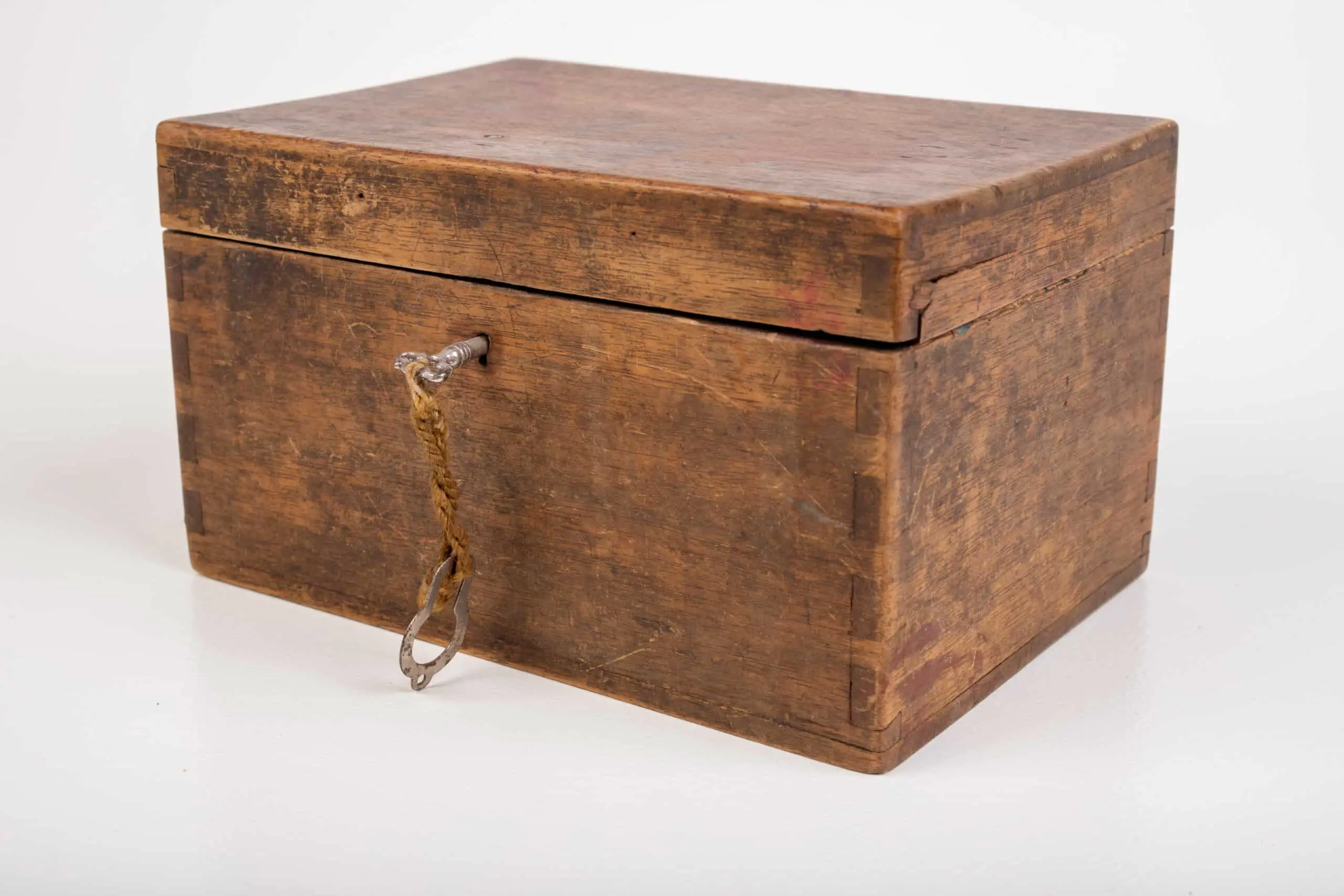
William Perry II was a wealthy senator in the early years of the United States. He owned the 350 acre Miles River estate and was Lord of Perry Hall Plantation. Every year before he would return to the Maryland State Legislature in Annapolis, Maryland he and his trusted servant would bury the family’s fortune on the estate. This was a practice many took part in at the time because there were no real banks to hold their valuables in when they were away. Perry lived to the age of 52 when he had a heart attack and died.
He died while he was away in Annapolis and he had his servant with him at the time. Only Perry and his servant knew where the treasure was buried on the property. The servant on his way back to the estate ended up dying without ever revealing where the treasure was buried.
With both men dead and no one else who knew where the treasure was buried the family spent generations trying to locate the family’s fortune to no avail. The Perry family eventually sold the property in 1967 to Kirkland Hall College.
The treasure has never been located and is presumed still buried on the Perry family’s estate which is a few miles west of Easton, Maryland on Highway 33 off of St. Michaels Road.
Silver Coins Wash Ashore on Bloodsworth Island
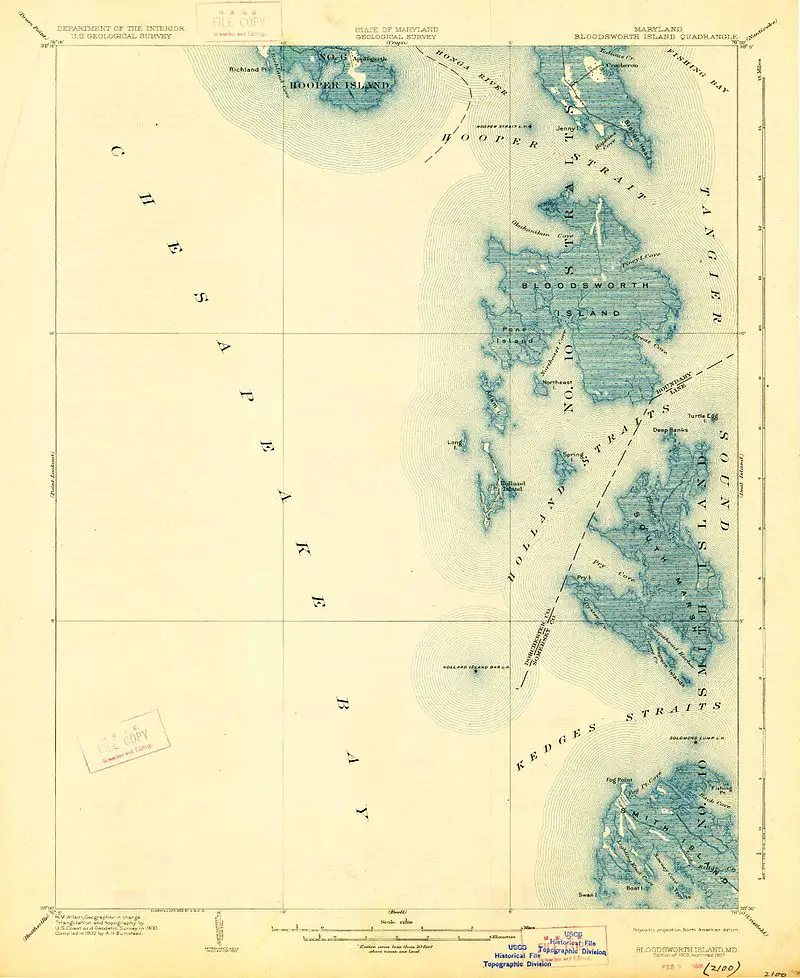
Bloodsworth Island is located in the Chesapeake Bay in Dorchester County Maryland. Many ships went down in this area including one wooden sailing ship that can be seen during low tide. It is reported that people along the northern tip of the island occasionally find silver Dutch and French coins dating from 1765 to1783 on the beaches there.
These coins are probably washing ashore from the many shipwrecks in the area. A thorough metal detecting of the beaches there could lead to more coin finds from that era.
Holland Island Treasure
Holland Island was named because of Dutch immigrants who came to the area in the 1700s. This island is located five miles south of Bloodsworth Island in the Chesapeake Bay. Beachcombers report finding Dutch coins from the late 1700s on the beaches here.
The coins presumably come from a Dutch ship that sank off the coast here. I’m sure after high tide there would be more coins to be found. The island has been sinking for years and now is underwater. The last house on the island sank into the bay in 2010. What a shame but at one time there was treasure to be found on her beaches.
Dr. Docker’s Missing Gold
Dr. Docker owned a farm close to Commerce, Maryland during the Civil War. He was a wealthy doctor who was afraid that his fortune would be taken by both Union and Confederate soldiers that were in the area in 1863.
So he decided to bury the gold that he had which was worth thousands of dollars at the time on his farm. He and his servant went and buried the gold. A little while after burying his gold he died. The servant wouldn’t tell where the gold was buried and some people from the town tortured him to death.
The whereabouts of the gold died with the servant and it has never been recovered. It’s presumed that the gold is still buried on Dr. Dockers farm near Commerce, Maryland.
Lost Treasures of Maryland Conclusion
Those are just a few of the lost treasure story’s that come out of the state of Maryland. There are many more but a lot of them have very little information associated with them. I try to bring you the ones that are mostly true but like any lost treasure story, you have to take them with a grain of salt. Many of them have been told throughout the centuries and dates and circumstances do change.
It’s always fun to speculate if the treasures are still buried waiting to be discovered. I hope you enjoyed this article on the lost treasures of Maryland. If you have any questions, comments, or experiences of treasure hunting in Maryland I would love to hear from you below.
Until next time, Happy Treasure Hunting!
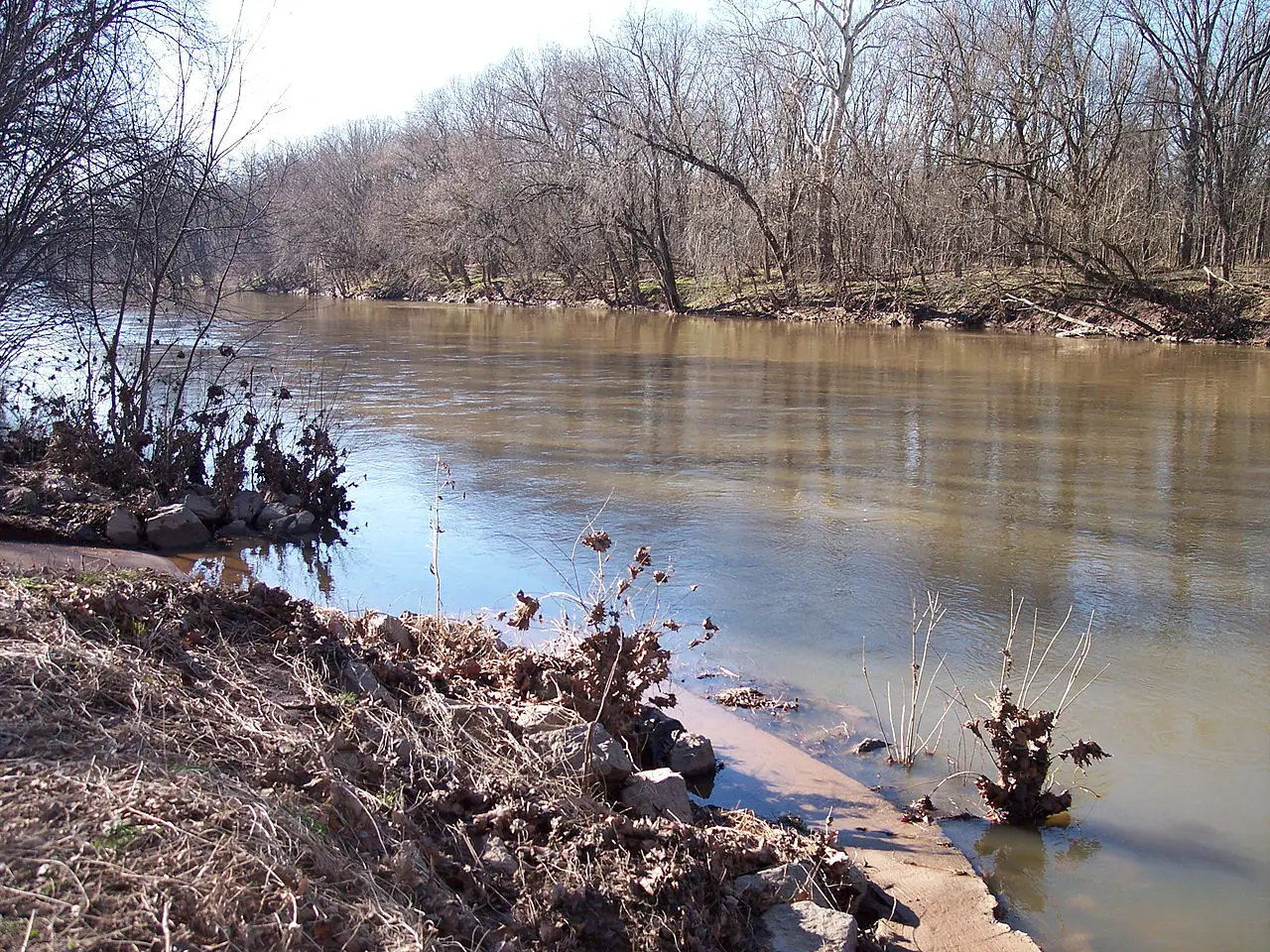
I had to laugh reading that. Jean Royer Champagne/Champayne is my maternal 4 times great-grandfather, & those legends have come down through the family. They built a school on top of the site of the old farm after it had had extensive archaeological surveys done. If it’s there, it’s under a school now!
Amazing Lisa, thanks for sharing!